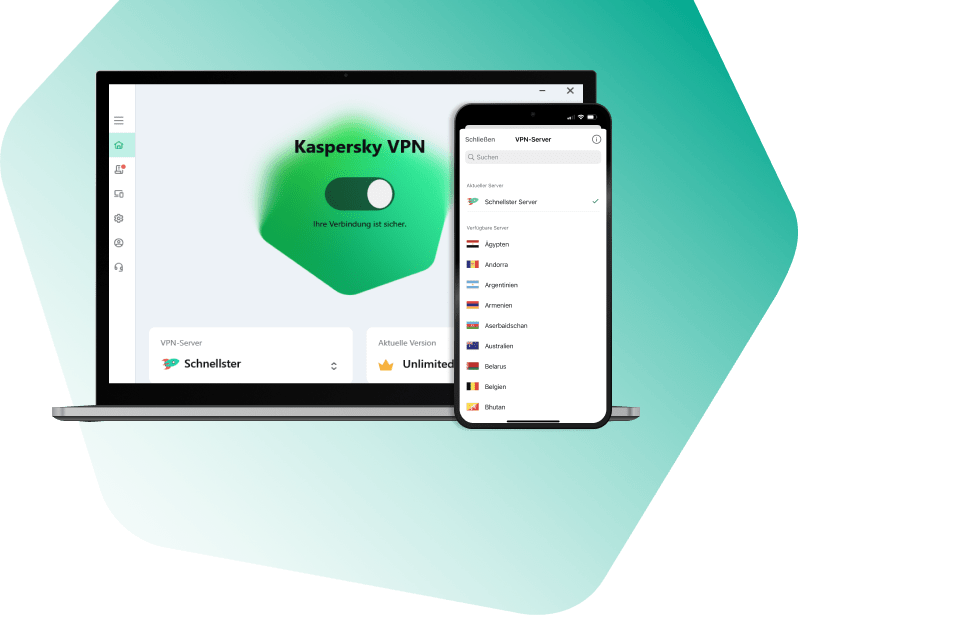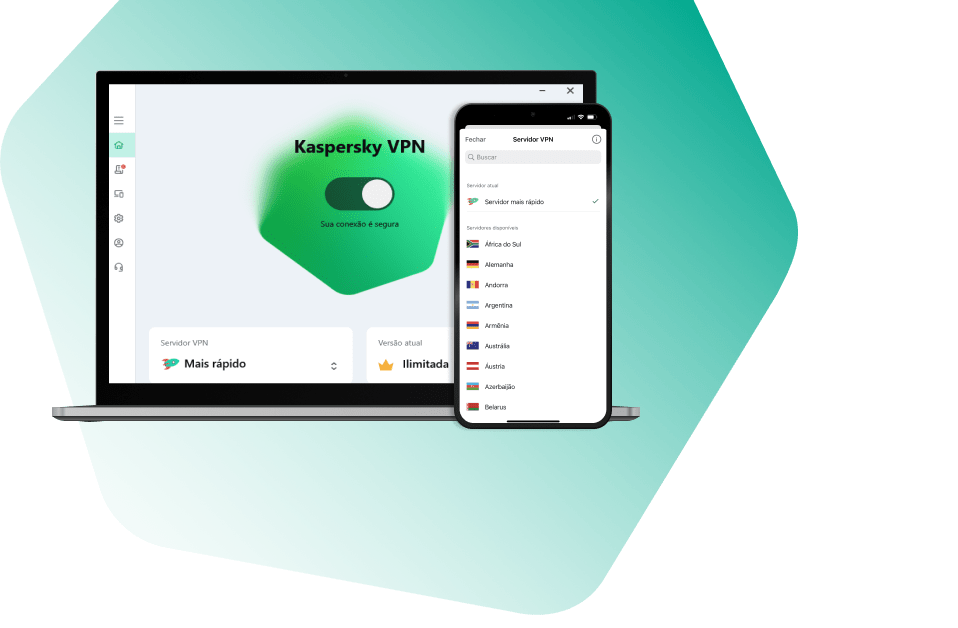How to renew the KSC certificate correctly [KSC for Windows]
This article is about Kaspersky Security Center for Windows (KSC for Windows)
Problem:
KSC certificate renewal or replacement is made incorrectly because the option to instantly replace the server certificate is used.
As a result, managed devices loose the connection with KSC and klmover command or re-installation of klnagent is required to restore the connectivity.
Cause:
After the certificate is renewed with "-t C" option, network agents do not receive a new certificate and have no connection to the server.
Solution:
In order to avoid such issues, run the certificate renewal script using the "-t CR" option (CR — Replace the common reserve certificate for ports 13000 and 13291) and the "-f" option in the <dd.mm.yyyy> format where we indicate the date 3–4 weeks ahead the current one.
The time we set aside for changing the certificate to a backup one will allow a new certificate to be distributed to all Kaspersky Network Agents (Nagent):
|
|
Type of certificate to be replaced. Possible values of the
|
|
|
Schedule for changing the certificate, using the format "DD-MM-YYYY hh:mm" (for ports 13000 and 13291). Use this parameter if you want to replace the common or reserve certificate before it expires. Specify the time when managed devices must synchronize with Administration Server on a new certificate. |
For example, consider the command "klsetsrvcert.exe -f "DD-MM-YYYY hh:mm" -t CR -g nb.loc". Since this command was used in October, a backup certificate would be created and distributed to all nagents within a month. Thus, the certificate should have been applied on November 1, 2022.
Checking the reserve certificate date
-
Run the Windows command prompt by using administrator rights, and then change your current directory to the directory with the
klsrvcertutility. The utility is located in the folder where Administration Server is installed. The default installation path is<Disk>:\Program Files (x86)\Kaspersky Lab\Kaspersky Security Center. -
Run
klscflag.exe -fget -pv klserver -n KLSRV_CERT_FORCED_RENEW_TIME -t q
-
Enter the resulting number in a converter to see the human-readable date: https://www.epochconverter.com/

Verification of reserve certificate on managed hosts
Let's check if the backup certificate has applied to the host. To do this, using the klscflag utility, enter the command: klscflag.exe -ssvget -pv 1103/1.0.0.0 -s KLNAG_SECTION_CERTDATA -n KLNAG_SSL_SERVER_CERT_RESERVE -ss '|ss_type = \"SS_LOCAL_MACHINE\";'
The certificate has been delivered.
If the backup certificate is not yet delivered to the destination host, we will see the following result of this command:
Verification of reserve certificate on secondary administration servers
When the command to renew the certificate on primary server is issued, the activity is logged to C:\ProgramData\KasperskyLab\adminkit\logs\CertRenewSysLogName.syslog.
Open it on primary server and check the recent entry containing "Server reserve certificate", for example:
Quote<142>1 2025-06-16T15:01:46.488Z ksc.ksctest.local CertRenewSysLogName 3228 - - Server reserve certificate is stored in global storage (certificate '2D2D2D2D2D424547494E2043455254494649434154452D2D2D2D2D0A4D494944766A434341716167417749424167495556424D7454645456614133346A5431467675743548365265784A45774451594A4B6F5A496876634E4151454C0A42514177484445614D426747413155454177775261334E6A4C6D747A5933526C633351756247396A595777774868634E4D6A55774E5445334D5455774D5451310A5768634E4D6A59774E6A45344D5455774D545131576A41634D526F7747415944565151444442467263324D7561334E6A6447567A6443357362324E68624443430A415349774451594A4B6F5A496876634E4151454242514144676745504144434341516F4367674542414C7651614E4273303436574D4C65696A42384D7656306F0A56346469776673486B6730303967524D4B75737A724A5130305746746C6B76743577493955414559467456756D30714E68447154354367476B5449716F4B514B0A315470336F52725047486F30534C694A6B6F6441416B346E6374597A634D33736352775533445735776F5946486E62344E7245744B7468433755344F587669620A464A2F766E65734A6E50556D4C4147503239726A5356456F2B6D5934354269666F4E3377654E497830392B6A32647753513176626B4A4C6942566A66777034370A68784D7230523845792F3334706F54505450346E49326E727759444B4547366259486A38746B6F72554A73706145562F496B42566C50664A2B7854566E666B4F0A2F445838567959324B4250534476736B3145384C666E444339534F704948755957614D6E5A644D766153625765396B6E447A785152706E682F737241795263430A4177454141614F42397A43423944416342674E5648524945465441546768467263324D7561334E6A6447567A6443357362324E686244416342674E56485245450A465441546768467263324D7561334E6A6447567A6443357362324E686244414C42674E564851384542414D4341615977485159445652304F42425945464D32750A4B7276667472324D56767147302F6168497270593652434B4D46634741315564497752514D453641464A56614A7352764757796958712F624461376C4D4B2F490A706D487A6F53436B486A41634D526F7747415944565151444442467263324D7561334E6A6447567A6443357362324E6862494955555A356B32544544676A78320A523562343041466A2B787A667770497745675944565230544151482F42416777426745422F7749424144416442674E5648535545466A415542676772426745460A42516344415159494B775...
This certificate should be propagated automatically to all secondary servers within the remaining time, before the common certificate expires.
In case there is at least one secondary KSC Server connected to the primary KSC, run the following sql query against the database used by each secondary server:
ms sql query to be run on secondary KSC Server
USE KAV; select imgMasterReservedCert ReserveCertificatefrom from aksrv_server_props;
KAV is the name of database used by a secondary server.
The script will display the identifier of primary KSC reserve certificate received by the secondary administration server - it should party match the number from syslog displayed above:
Quote0x2D2D2D2D2D424547494E2043455254494649434154452D2D2D2D2D0A4D494944766A434341716167417749424167495556424D7454645456614133346A5431467675743548365265784A45774451594A4B6F5A496876634E4151454C0A42514177484445614D426747413155454177775261334E6A4C6D747A5933526C633351756247396A595777774868634E4D6A55774E5445334D5455774D5451310A5768634E4D6A59774E6A45344D5455774D545131576A41634D526F7747415944565151444442467263324D7561334E6A6447567A6443357362324E68624443430A415349774451594A4B6F5A496876634E4151454242514144676745504144434341516F4367674542414C7651614E4273303436574D4C65696A42384D7656306F0A56346469776673486B6730303967524D4B75737A724A5130305746746C6B76743577493955414559467456756D30714E68447154354367476B5449716F4B514B0A315470336F52725047486F30534C694A6B6F6441416B346E6374597A634D33736352775533445735776F5946486E62344E7245744B7468433755344F587669620A464A2F766E65734A6E50556D4C4147503239726A5356456F2B6D5934354269666F4E3377654E497830392B6A32647753513176626B4A4C6942566A66777034370A68784D7230523845792F3334706F54505450346E49326E727759444B4547366259486A38746B6F72554A73706145562F496B42566C50664A2B7854566E666B4F0A2F445838567959324B4250534476736B3145384C666E444339534F704948755957614D6E5A644D766153625765396B6E447A785152706E682F737241795263430A4177454141614F42397A43423944416342674E5648524945465441546768467263324D7561334E6A6447567A6443357362324E686244416342674E56485245450A465441546768467263324D7561334E6A6447567A6443357362324E686244414C42674E564851384542414D4341615977485159445652304F42425945464D32750A4B7276667472324D56767147302F6168497270593652434B4D46634741315564497752514D453641464A56614A7352764757796958712F624461376C4D4B2F490A706D487A6F53436B486A41634D526F7747415944565151444442467263324D7561334E6A6447567A6443357362324E6862494955555A356B32544544676A78320A523562343041466A2B787A667770497745675944565230544151482F42416777426745422F7749424144416442674E5648535545466A415542676772426745460A42516344415159494B775........
In case there are secondary KSC Servers located in DMZ, KSC should be able to connect to them to download the certificate. If no info about secondary server's certificate is stored in the database of primary server, the automatic renewal of secondary server's certificate will not work properly. secondary server will be disconnected when the certificate expires and should be re-connected manually by KSC Administrator.
In order to avoid such situation, use the following sql query to make sure all certificates of secondary server have been received by primary KSC successfully:
Query to be run on primary KSC:
select Hosts.strDisplayName as SecondaryServerName, cast(cast(child_servers.imgCertificate as varbinary(max)) as varchar(max)) as CurrentCertificate, cast(cast(child_servers.imgReserveCert as varbinary(max)) as varchar(max)) as ReserveCertificate from child_servers inner join Hosts on child_servers.nIdHost = Hosts.nId;
Current certificate is expected to be not NULL. Otherwise, re-connect secondary server to the primary manually and make sure there is no connectivity issue.
Example:
Quote192.168.1.222
-----BEGIN CERTIFICATE-----
MIIDvjCCAqagAwIBAgIUJhZfMFZrF0rhoNA+wzPS5tEmj+8wDQYJKoZIhvcNAQEL BQAwHDEaMBgGA1UEAwwRZGMxLmtzY3Rlc3QubG9jYWwwHhcNMjQxMTA2MTIyNTUz WhcNMjUxMjA4MTIyNTUzWjAcMRowGAYDVQQDDBFkYzEua3NjdGVzdC5sb2NhbDCC ASIwDQYJKoZIhvcNAQEBBQADggEPADCCAQoCggEBAJ2sVnYNKWHEDO8HXkKksG9X WComiBWVYgpCwx9/i2yFfKmVgVhnT9Yg3mftgyYdZ2V2udCThC2ZxIkA5B3Dnaw/ RBlrRmhAeak5wQs12qTsbRJhOPcqmaoDDe0FZ0dZ4Dv60QLmS7vbi/AvZ1XLf106 3BHnakanGoBsvjF6Wsrg4BjR17sb3HjUYFWYd3iZ/fT4sWL4VbTYhspXM9VyJw/5 tQfReS2/84l7PA+7wE80fXD3y7K+dGljhp7kUqCUnGBkIq5vPPx8HD6mUCxZCKQB ZAn2w0MhDhTfiCpBuuYh0QWx6TxcMQ/TtSDvgRkfSZ8bMzT9zYw69DMOi9ukeuEC AwEAAaOB9zCB9DAcBgNVHRIEFTATghFkYzEua3NjdGVzdC5sb2NhbDAcBgNVHREE FTATghFkYzEua3NjdGVzdC5sb2NhbDALBgNVHQ8EBAMCAaYwHQYDVR0OBBYEFOGf wWoxj924mnaaF10douKwCLMbMFcGA1UdIwRQME6AFOQ5TL+pnURz1fq2pauJMik+ HY1KoSCkHjAcMRowGAYDVQQDDBFkYzEua3NjdGVzdC5sb2NhbIIUKWl0PMtThGoW 2P0wanMPNGlxlUYwEgYDVR0TAQH/BAgwBgEB/wIBADAdBgNVHSUEFjAUBggrBgEF BQcDAQYIKwYBBQUHAwIwDQYJKoZIhvcNAQELBQADggEBAGBN5qQowGROPlfkTjqJ 59UYhMSEdczMDkaBbeUb0+jzju9GD3rXXBZ47oPcn8Uu/3P1ZqYIXyK2pqTQaxN3 XUW5NPE03KAgBufDHTPUP5jDrjf3b5uUD1OhY20oz1kGODa6eSZG/mlRYfWqTdAb CceQ0GS39/6ZwX0yPrjuaoWh+IbTMuygPEH1AAs4VD55af1E59aOTtwL7s2y04ba 8NiFNAprHZeJtr5u2RUYN/LSVrt8Aze6wyGyG+9U4t/arWIh/VUWTKZk/4QOUIOp exhlRxtNu2S5ud6/TXtsUZ7RK9pzxqaqlbHXCvy01R3vwWRVwi55CFyJJ1hkNuUe UsE=
-----END CERTIFICATE-----
Please be advised that automatic renewal of secondary server certificate is supported since KSC 14.0. Older versions are not supported.
Known problem:
Problem with Webconsole login - incorrect user or password - see article
Error - Failed to establish connection with the remote device:
This error occurs because we are trying to execute 2 consecutive commands on the same line. The first command is "-t CR -g nb.loc" and the second is "-f '20-12-2023 00:00'". Since the administration server restarts after executing the first command, the second command waits for some timeout before executing. But since in some user configurations, restarting the service can take a long time, the second part is performed when the server has not started yet. Which leads to the above error.
In order to fix this behavior, you need to run the commands separately, according to this scenario:
- Run .\klsetsrvcert.exe -t CR -g nb.loc
- Wait until the administration server service starts completely (you can check by connecting the console).
- Run .\klsetsrvcert.exe -f '20-12-2023 00:00'































0 Comments
Recommended Comments
There are no comments to display.
Please sign in to comment
You will be able to leave a comment after signing in
Sign In Now